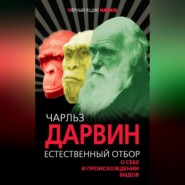По всем вопросам обращайтесь на: info@litportal.ru
(©) 2003-2025.
✖
The Expression of the Emotions in Man and Animals
Настройки чтения
Размер шрифта
Высота строк
Поля
[ Quoted by Sir J. Lubbock, 'Prehistoric Times,' 1865, p. 458.]
701 (return (#linknoteref_701))
[ The above descriptive remarks are taken in part from my own observations, but chiefly from Gratiolet ('De la Physionomie,' pp. 53, 337; on Sighing, 232), who has well treated this whole subject. See, also, Huschke, 'Mimices et Physiognomices, Fragmentum Physiologi-cum,' 1821, p. 21. On the dulness of the eyes, Dr. Piderit, 'Mimik und Physiognomik,' 1867, s. 65.]
702 (return (#linknoteref_701))
[ On the action of grief on the organs of respiration, see more especially Sir C. Bell, 'Anatomy of Expression,' 3rd edit. 1844, p. 151.]
703 (return (#linknoteref_703))
[ In the foregoing remarks on the manner in which the eyebrows are made oblique, I have followed what seems to be the universal opinion of all the anatomists, whose works I have consulted on the action of the above-named muscles, or with whom I have conversed. Hence throughout this work I shall take a similar view of the action of the corrugator supercilii, orbicularis, pyramidalis nasi, and frontalis muscles. Dr. Duchenne, however, believes, and every conclusion at which he arrives deserves serious consideration, that it is the corrugator, called by him the sourcilier, which raises the inner corner of the eyebrows and is antagonistic to the upper and inner part of the orbicular muscle, as well as to the pyramidalis nasi (see Mécanisme de la Phys. Humaine, 1862, folio, art. v., text and figures 19 to 29: octavo edit. 1862, p. 43 text). He admits, however, that the corrugator draws together the eyebrows, causing vertical furrows above the base of the nose, or a frown. He further believes that towards the outer two-thirds of the eyebrow the corrugator acts in conjunction with the upper orbicular muscle; both here standing in antagonism to the frontal muscle. I am unable to understand, judging from Henle's drawings (woodcut, fig. 3), how the corrugator can act in the manner described by Duchenne. See, also, on this subject, Prof. Donders' remarks in the 'Archives of Medicine,' 1870, vol. v. p. 34. Mr. J. Wood, who is so well known for his careful study of the muscles of the human frame, informs me that he believes the account which I have given of the action of the corrugator to be correct. But this is not a point of any importance with respect to the expression which is caused by the obliquity of the eyebrows, nor of much importance to the theory of its origin.]
704 (return (#linknoteref_704))
[ I am greatly indebted to Dr. Duchenne for permission to have these two photographs (figs. 1 and 2) reproduced by the heliotype process from his work in folio. Many of the foregoing remarks on the furrowing of the skin, when the eyebrows are rendered oblique, are taken from his excellent discussion on this subject.]
705 (return (#linknoteref_705))
[ Mecanisme de la Phys. Humaine, Album, p. 15.]
706 (return (#linknoteref_706))
[ Henle, Handbuch der Anat. des Menschen, 1858, B. i. s. 148, figs. 68 and 69.]
707 (return (#linknoteref_706))
[ See the account of the action of this muscle by Dr. Duchenne, 'Mecanisme de la Physionomie Humaine, Album (1862), viii. p. 34.]
801 (return (#linknoteref_801))
[ Herbert Spencer, 'Essays Scientific,' &c., 1858, p. 360.]
802 (return (#linknoteref_801))
[ F. Lieber on the vocal sounds of L. Bridgman, 'Smithsonian Contributions,' 1851, vol. ii. p. 6.]
803 (return (#linknoteref_803))
[ See, also, Mr. Marshall, in Phil. Transact. 1864, p. 526.]
804 (return (#linknoteref_804))
[ Mr. Bain ('The Emotions and the Will,' 1865, p. 247) has a long and interesting discussion on the Ludicrous. The quotation above given about the laughter of the gods is taken from this work. See, also, Mandeville, 'The Fable of the Bees,' vol. ii. p. 168.]
805 (return (#linknoteref_804))
[ 'The Physiology of Laughter,' Essays, Second Series, 1863, p. 114.]
806 (return (#linknoteref_806))
[ J. Lister in 'Quarterly Journal of Microscopical Science,' 1853, vol. 1. p. 266.]
807 (return (#linknoteref_806))
[ 'De la Physionomie,' p. 186.]
808 (return (#linknoteref_808))
[ Sir C. Bell (Anat. of Expression, p. 147) makes some remarks on the movement of the diaphragm during laughter.]
809 (return (#linknoteref_809))
[ 'Mecanisme de la Physionomie Humaine,' Album, Legende vi.]
810 (return (#linknoteref_809))
[ Handbuch der System. Anat. des Menschen, 1858, B. i. s. 144. See my woodcut (H. fig. 2).]
811 (return (#linknoteref_811))
[ See, also, remarks to the same effect by Dr. J. Crichton Browne in 'Journal of Mental Science,' April, 1871, p. 149.]
812 (return (#linknoteref_812))
[ C. Vogt, 'Memoire sur les Microcephales,' 1867, p. 21.]
813 (return (#linknoteref_812))
[ Sir C. Bell, 'Anatomy of Expression,' p. 133.]
814 (return (#linknoteref_812))
[ 'Mimik und Physiognomik,' 1867, s. 63-67.]
815 (return (#linknoteref_815))
[ Sir T. Reynolds remarks ('Discourses,' xii. p. 100), "it is curious to observe, and it is certainly true, that the extremes of contrary passions are, with very little variation, expressed by the same action." He gives as an instance the frantic joy of a Bacchante and the grief of a Mary Magdalen.]
816 (return (#linknoteref_816))
[ Dr. Piderit has come to the same conclusion, ibid. s. 99.]
817 (return (#linknoteref_817))
[ 'La Physionomie,' par G. Lavater, edit. of 1820, vol. iv. p. 224. See, also, Sir C. Bell, 'Anatomy of Expression,' p. 172, for the quotation given below.]
818 (return (#linknoteref_818))
701 (return (#linknoteref_701))
[ The above descriptive remarks are taken in part from my own observations, but chiefly from Gratiolet ('De la Physionomie,' pp. 53, 337; on Sighing, 232), who has well treated this whole subject. See, also, Huschke, 'Mimices et Physiognomices, Fragmentum Physiologi-cum,' 1821, p. 21. On the dulness of the eyes, Dr. Piderit, 'Mimik und Physiognomik,' 1867, s. 65.]
702 (return (#linknoteref_701))
[ On the action of grief on the organs of respiration, see more especially Sir C. Bell, 'Anatomy of Expression,' 3rd edit. 1844, p. 151.]
703 (return (#linknoteref_703))
[ In the foregoing remarks on the manner in which the eyebrows are made oblique, I have followed what seems to be the universal opinion of all the anatomists, whose works I have consulted on the action of the above-named muscles, or with whom I have conversed. Hence throughout this work I shall take a similar view of the action of the corrugator supercilii, orbicularis, pyramidalis nasi, and frontalis muscles. Dr. Duchenne, however, believes, and every conclusion at which he arrives deserves serious consideration, that it is the corrugator, called by him the sourcilier, which raises the inner corner of the eyebrows and is antagonistic to the upper and inner part of the orbicular muscle, as well as to the pyramidalis nasi (see Mécanisme de la Phys. Humaine, 1862, folio, art. v., text and figures 19 to 29: octavo edit. 1862, p. 43 text). He admits, however, that the corrugator draws together the eyebrows, causing vertical furrows above the base of the nose, or a frown. He further believes that towards the outer two-thirds of the eyebrow the corrugator acts in conjunction with the upper orbicular muscle; both here standing in antagonism to the frontal muscle. I am unable to understand, judging from Henle's drawings (woodcut, fig. 3), how the corrugator can act in the manner described by Duchenne. See, also, on this subject, Prof. Donders' remarks in the 'Archives of Medicine,' 1870, vol. v. p. 34. Mr. J. Wood, who is so well known for his careful study of the muscles of the human frame, informs me that he believes the account which I have given of the action of the corrugator to be correct. But this is not a point of any importance with respect to the expression which is caused by the obliquity of the eyebrows, nor of much importance to the theory of its origin.]
704 (return (#linknoteref_704))
[ I am greatly indebted to Dr. Duchenne for permission to have these two photographs (figs. 1 and 2) reproduced by the heliotype process from his work in folio. Many of the foregoing remarks on the furrowing of the skin, when the eyebrows are rendered oblique, are taken from his excellent discussion on this subject.]
705 (return (#linknoteref_705))
[ Mecanisme de la Phys. Humaine, Album, p. 15.]
706 (return (#linknoteref_706))
[ Henle, Handbuch der Anat. des Menschen, 1858, B. i. s. 148, figs. 68 and 69.]
707 (return (#linknoteref_706))
[ See the account of the action of this muscle by Dr. Duchenne, 'Mecanisme de la Physionomie Humaine, Album (1862), viii. p. 34.]
801 (return (#linknoteref_801))
[ Herbert Spencer, 'Essays Scientific,' &c., 1858, p. 360.]
802 (return (#linknoteref_801))
[ F. Lieber on the vocal sounds of L. Bridgman, 'Smithsonian Contributions,' 1851, vol. ii. p. 6.]
803 (return (#linknoteref_803))
[ See, also, Mr. Marshall, in Phil. Transact. 1864, p. 526.]
804 (return (#linknoteref_804))
[ Mr. Bain ('The Emotions and the Will,' 1865, p. 247) has a long and interesting discussion on the Ludicrous. The quotation above given about the laughter of the gods is taken from this work. See, also, Mandeville, 'The Fable of the Bees,' vol. ii. p. 168.]
805 (return (#linknoteref_804))
[ 'The Physiology of Laughter,' Essays, Second Series, 1863, p. 114.]
806 (return (#linknoteref_806))
[ J. Lister in 'Quarterly Journal of Microscopical Science,' 1853, vol. 1. p. 266.]
807 (return (#linknoteref_806))
[ 'De la Physionomie,' p. 186.]
808 (return (#linknoteref_808))
[ Sir C. Bell (Anat. of Expression, p. 147) makes some remarks on the movement of the diaphragm during laughter.]
809 (return (#linknoteref_809))
[ 'Mecanisme de la Physionomie Humaine,' Album, Legende vi.]
810 (return (#linknoteref_809))
[ Handbuch der System. Anat. des Menschen, 1858, B. i. s. 144. See my woodcut (H. fig. 2).]
811 (return (#linknoteref_811))
[ See, also, remarks to the same effect by Dr. J. Crichton Browne in 'Journal of Mental Science,' April, 1871, p. 149.]
812 (return (#linknoteref_812))
[ C. Vogt, 'Memoire sur les Microcephales,' 1867, p. 21.]
813 (return (#linknoteref_812))
[ Sir C. Bell, 'Anatomy of Expression,' p. 133.]
814 (return (#linknoteref_812))
[ 'Mimik und Physiognomik,' 1867, s. 63-67.]
815 (return (#linknoteref_815))
[ Sir T. Reynolds remarks ('Discourses,' xii. p. 100), "it is curious to observe, and it is certainly true, that the extremes of contrary passions are, with very little variation, expressed by the same action." He gives as an instance the frantic joy of a Bacchante and the grief of a Mary Magdalen.]
816 (return (#linknoteref_816))
[ Dr. Piderit has come to the same conclusion, ibid. s. 99.]
817 (return (#linknoteref_817))
[ 'La Physionomie,' par G. Lavater, edit. of 1820, vol. iv. p. 224. See, also, Sir C. Bell, 'Anatomy of Expression,' p. 172, for the quotation given below.]
818 (return (#linknoteref_818))
















